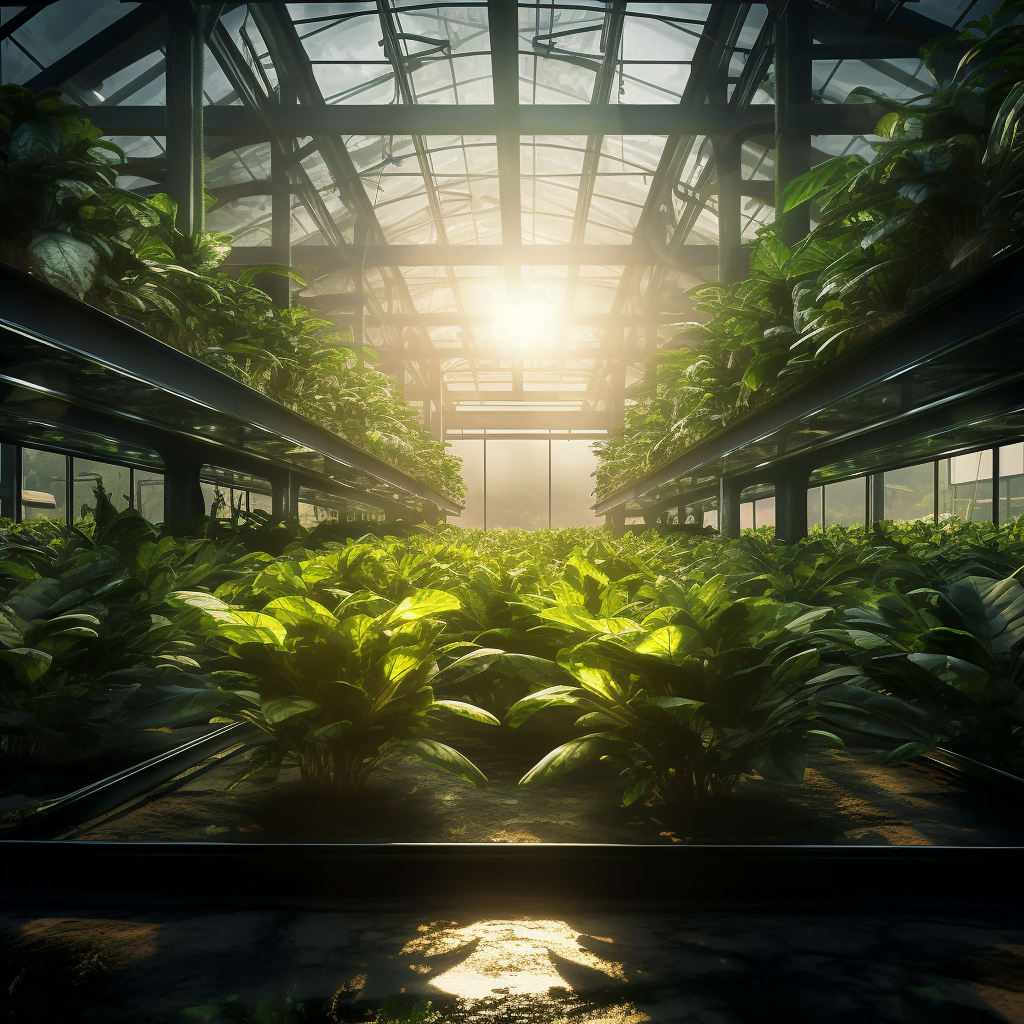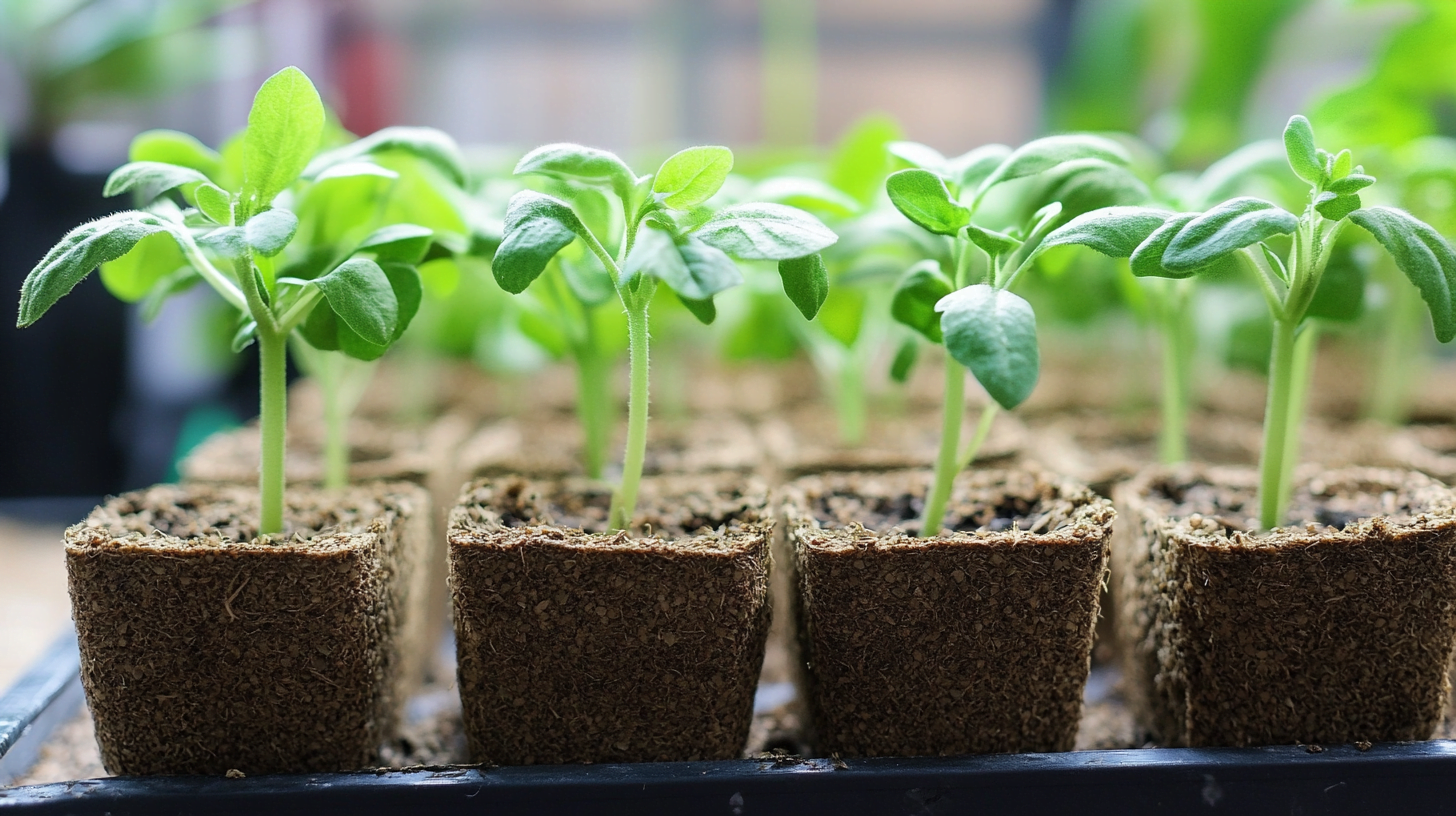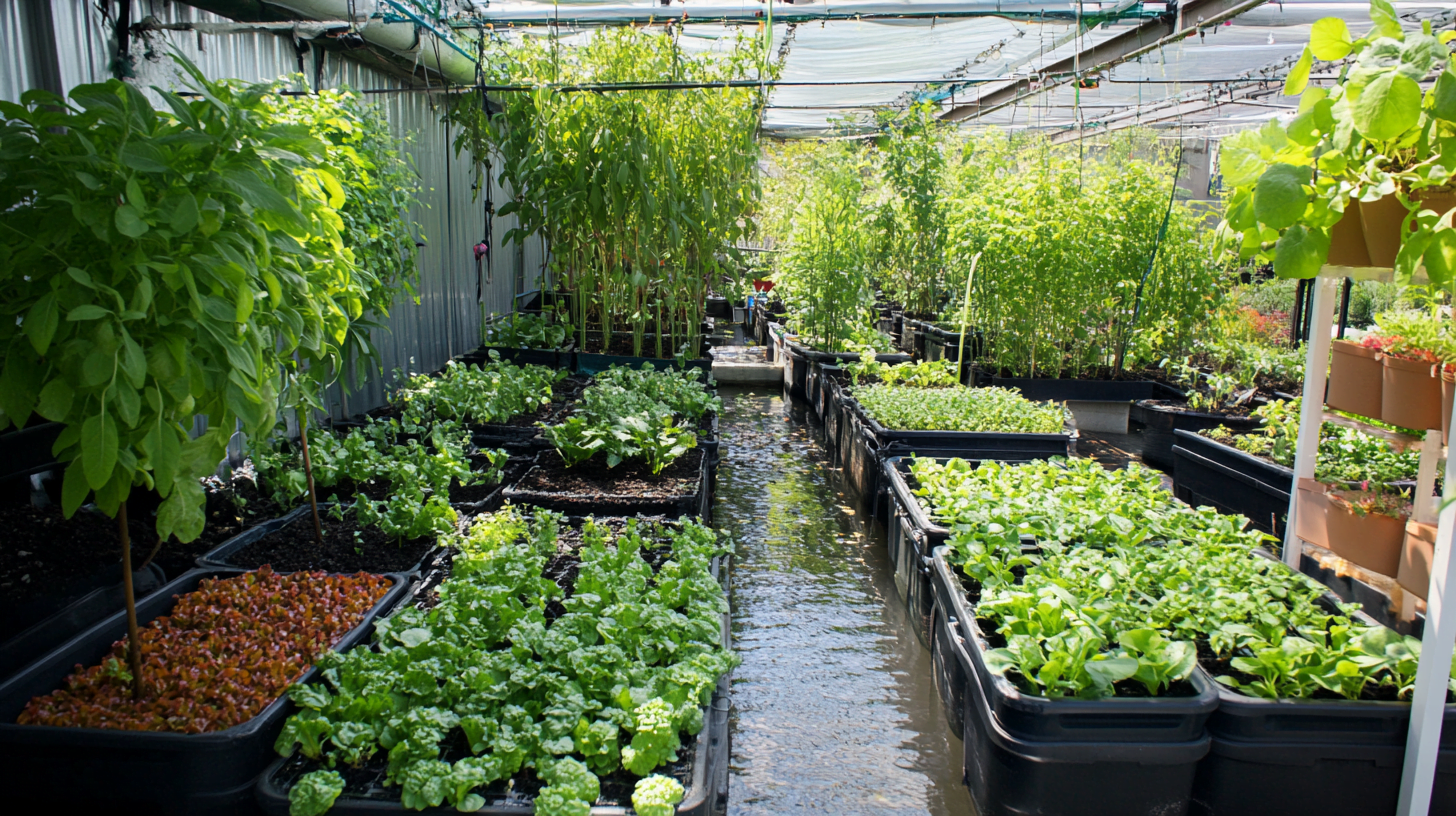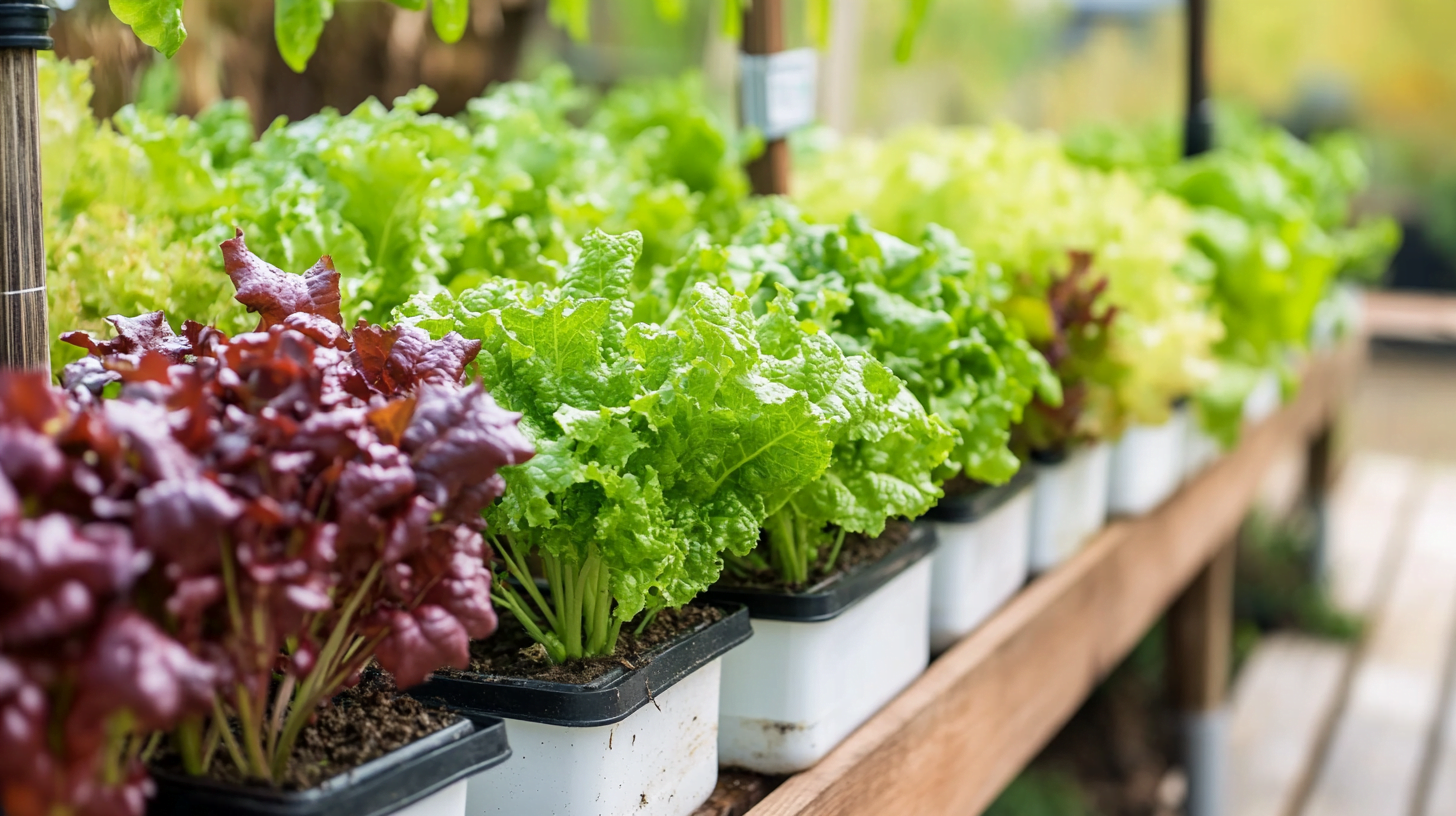Hydroponics is the method of growing plants without soil by supplying nutrients through water. With hydroponic gardening, plants are suspended with their roots directly in a nutrient-rich solution. This allows the plants to absorb everything they need while omitting the need for soil.
One question that often arises with hydroponics is whether or not natural sunlight is required, or if artificial grow lights can fully replace sunlight. Below we’ll explore the role of light in plant growth, compare sunlight to indoor lighting options, and determine if hydroponics truly requires any natural sunlight exposure. so let´s find out Do Hydroponic Plants Need Sunlight?
How Sunlight Powers Photosynthesis and Plant Growth
Photosynthesis is the process plants use to convert light energy, carbon dioxide, and water into food energy and oxygen. This process is vital for plant growth and occurs in two main stages:
- Light-dependent reactions – Plants absorb light energy through chlorophyll in their leaves. This energy is stored in ATP and NADPH molecules for later use. Oxygen is released as a byproduct.
- Light-independent reactions (Calvin cycle) – The stored ATP and NADPH is used to fix carbon from CO2 into organic sugars. These sugars power plant growth and development.
For photosynthesis to optimally occur, plants need:
- Photosynthetically Active Radiation (PAR) – the type of light energy plants can use for photosynthesis. This includes wavelengths between 400-700 nanometers, which encompasses the visible light spectrum.
- Adequate light intensity – measured in units like lumens, lux, or PPFD (photosynthetic photon flux density). Different plants require different minimum light intensities depending on their variety and growth stage.
- Sufficient photoperiod – the number of hours exposed to light during a 24-hour cycle. Generally 12-16 hours of light per day is recommended, though this can be tailored to the plant.
Sunlight naturally provides the full spectrum, intensity, and consistent daily photoperiods that plants need for robust photosynthesis. But with artificial lighting, these variables can also be precisely controlled.
Measuring Light Quality for Plant Growth
Plants primarily use three regions of the visible color spectrum for photosynthesis:
- Blue light (430-450nm) – Drives leaf growth, chlorophyll production
- Green light (500-600nm) – Powers photosynthesis
- Red light (650-680nm) – Promotes flowering and fruiting
In addition to the visible colors, ultraviolet and far-red wavelengths outside the human visible range also play roles in plant growth.
Growers use measurements like PPFD (photosynthetic photon flux density) and the PAR light integral to optimize both light quantity and quality:
- PPFD – The number of photons in the PAR range per second per square meter. Indicates light energy available.
- PAR – The cumulative amount of PAR delivered over a given time period. Measured in mol/m2/day.
A PPFD meter and daily PAR light integral tracking provide quantified insights into your grow lights’ output and plants’ actual light absorption.
Comparing Sunlight to Indoor Grow Lights
While sunlight is the original and most natural light source for plant growth, indoor grow lights can replicate and optimize the specific variables plants need:
Spectrum Differences
- Sunlight – Emits a continuous spectrum of light, including ultraviolet wavelengths.
- Grow lights – Can emit spectra tailored specifically to a plant’s photoreceptor peaks. LEDs permit customizable blends of red, blue, and white light.
Light Intensity Variations
- Sunlight – Provides ~2,000 μmol/m2/s of peak PPFD on a sunny day.
- HPS lights – Offer ~1,000 μmol/m2/s PPFD, less intense than direct sun.
- LEDs – Range from 300 to over 1,500 μmol/m2/s depending on model and wattage.
Photoperiod Management
- Sunlight – Varies by season, with up to 16 hours/day in summer and ~10 in winter.
- Grow lights – Can provide 12-18+ hours of consistent photoperiods year-round.
Positional Flexibility
- Sunlight – Strikes from above at changing angles based on time of day/year.
- Grow lights – Can be positioned throughout the grow space for optimized coverage.
| Light Source | Spectrum | Intensity | Photoperiod | Positioning |
|---|---|---|---|---|
| Sunlight | Continuous | Up to 2,000 μmol/m2/s | Variable by season | Above plants |
| HPS Lights | Broad mix | ~1,000 μmol/m2/s | Consistent 12+ hrs | Above or side |
| LEDs | Customizable | 300 – 1,500+ μmol/m2/s | Precisely programed | Flexible positions |
While the sun offers the original template, grow lights permit precision control over every aspect of light delivery tailored to each plant’s specific needs.
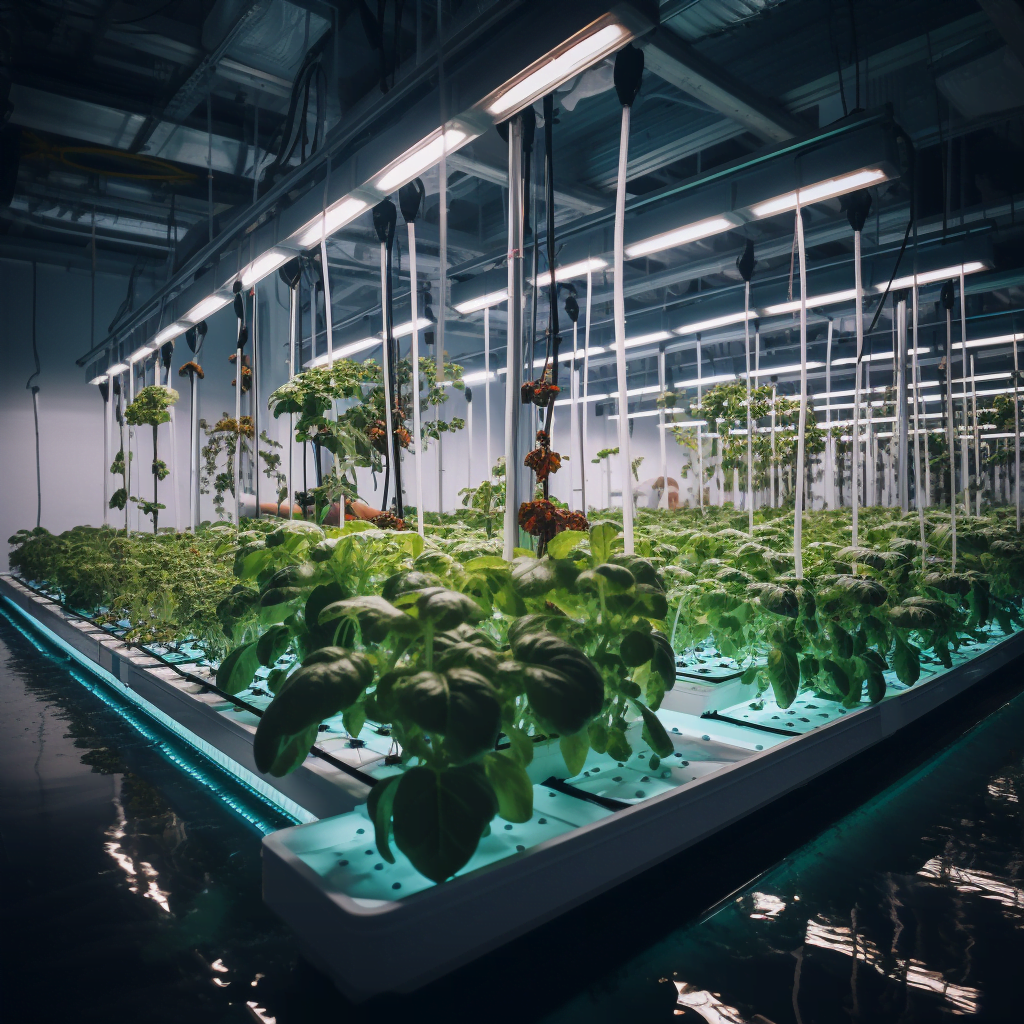
Grow Light Options for Indoor Hydroponics
There are various types of grow lights suitable for meeting the light needs of hydroponic plants:
High Intensity Discharge (HID) Lights
- HPS (High Pressure Sodium) – Produce wide spectrum mimicking natural sunlight. Very high light intensity but lots of radiant heat.
- MH (Metal Halide) – Bluer light ideal for leafy greens and seedlings. Less heat than HPS.
- CMH (Ceramic Metal Halide) – Advanced MH lamps with higher CRI and UV. Higher efficiency than HPS.
HID lights dominated commercial growing for decades due to their high intensities and broad spectrums. But lower energy efficiency and high heat output are disadvantages.
Fluorescent Grow Lights
- CFLs – Compact fluorescents ideal for small hydroponic and aquaponic grows. Limited light penetration.
- T5 – High output T5 tubes deliver excellent efficiency for vertical farming and short, dense crops.
Fluorescents are affordable to purchase but only suitable for relatively low light crops like lettuce, herbs and microgreens.
Plasma Grow Lights
- Double-Ended HPS – Advanced plasma lamps delivering very high intensity from compact source.
- LEP – Cutting edge plasma lamps rivaling the sun’s intensity with full UV/IR spectrum.
Plasma lamps offer the highest light intensity available. But sky-high purchase and energy costs limit use to commercial operations.
Light Emitting Diodes (LEDs)
- Full Spectrum – Advanced LEDs blend blue, red, and white LED chips for broad-spectrum grow light coverage.
- Modular Designs – Mix and match different color LED bars depending on plant growth stage.
- Passive Cooling – LED’s run cooler than other types, reducing HVAC costs.
Thanks to recent technological leaps, LEDs now offer efficiency and intensity on par with legacy lights but with longer lifespans, lower operating costs, and customizable spectrums. LED grow lights dominate the hobbyist and commercial markets today.
Optimizing Light Positions and Schedules
Proper positioning and photoperiod management are key to maximizing plant growth under indoor lighting:
Positioning Lights for Uniform Coverage
- Above canopy – Traditional positioning for HID lights to distribute intensity from up high.
- Intercropping – Interlacing rows of top lights with lower side lighting for multi-level grows.
- Movable lights – Track systems allow repositioning lights as plants grow taller.
- Light spread – Overlap reflectors and adjust height to avoid dark spots between lights.
Photoperiod Recommendations
- Seedlings – Start with 18 hours on, 6 off and gradually reduce to 16 hour photoperiod.
- Vegetative stage – For leafy greens and vegetative growth use 16-18 hours on.
- Flowering – Most flowering plants require 12 hours on for proper bud development.
Managing Light Intensity
- Daily DLI tracking – Use PAR meters to monitor and hit optimal Daily Light Integral (mol/m2/day) for each growth phase.
- Dimming capabilities – Reduce intensity on young plants and adjust up to maximize yields without burning.
- Supplemental lighting – Add lower intensity inter-lighting to boost bottom canopy development.
While HID lighting generally provides fixed coverage, advanced LED systems permit full programmability and customization over both photoperiod scheduling and light intensity outputs.
Do Hydroponic Plants Require Any Sunlight?
Given the photosynthetic flexibility of indoor grow lights, providing the proper spectrum, intensity and photoperiod, hydroponic plants can thrive without any natural sunlight.
Some key considerations regarding sunlight requirements:
- With customized LED lighting recipes and intensity management, the sun’s specific blend is no longer essential.
- Consistent, stabilized indoor conditions can minimize environmental fluctuations that outdoor crops face.
- However, supplemental UV lighting may be beneficial for plants like tomatoes, cannabis, and herbs to enhance flavor, aroma, and resin production.
- While possible to cultivate many varieties 100% under artificial light, some rare heirloom plants still depend on solar cues for propagation.
- Outdoor sunlight penetration through semi-transparent greenhouse panels can actively boost growth when paired with supplemental electric lighting.
- Passive solar heating and illumination can significantly reduce lighting energy costs in transparent greenhouses, provided adequate climate controls and blackout shading systems are in place.
So in summary, while most commercial crops can be grown solely under stabilized indoor lighting regimes, small amounts of UV supplementation and solar integration in greenhouses can enhance product quality and offer energy efficiency benefits.
Tips for Optimizing Grow Lights in Hydroponic Systems
When designing the lighting scheme for an indoor hydroponic operation, keep these key tips in mind:
Selecting Appropriate Fixtures
- Choose full spectrum LEDs or plasma lamps to provide light wavelengths optimized for all growth stages.
- Invest in movable and modular LED systems for maximum positional flexibility as plants grow.
- Ensure lighting power density (W/sq ft) is sufficient to achieve target PPFD levels for each crop variety and stage.
- Include intra-canopy lighting for leafy greens and multi-tier vertical farms to boost bottom canopy development.
Designing Lighting Layouts
- Position top lighting for broad coverage without dead zones or shadows.
- Stagger and overlap reflectors to ensure uniform distribution across the entire canopy.
- Use targeted side lighting to boost yields on the lower branches and periphery.
- Install adjustable mountings so lights can be raised up as plants grow taller.
Monitoring Your Grow
- Use PPFD meters to dial in optimal light intensities and measure light uniformity.
- Track daily PAR light integral levels to ensure plants get adequate overall daily light dosage.
- Watch plant morphology and growth patterns and adjust lighting as needed based on responses.
Environmental Interactions
- Enrich CO2 levels to up to 1500 PPM once adequate lighting levels are provided to maximize photosynthetic rates.
- Maintain temperatures within ideal ranges – LEDs run cooler than HID lighting.
- Use chilled nutrient reservoirs and monitor humidity levels to manage heat.
- Circulate air for stronger stems and prevention of molds and disease.
By properly designing and monitoring your hydroponic lighting system, plants can thrive under 100% artificial indoor conditions with yields and potency meeting or exceeding outdoor agriculture.
Other Environmental Considerations
In addition to lighting, hydroponic gardeners also need to monitor and control:
Temperature Management
- Day and night temperature setpoints optimized for each plant variety.
- Lights produce heat and raise temperatures. Proper HVAC needed to maintain ideal ranges.
- Chilled reservoirs or climate controlled water for stable root temperatures.
Humidity Control
- Ideal relative humidity percentage range for each growth stage to prevent issues like mold.
- Dehumidification and evaporative cooling systems help regulate humidity along with ventilation.
- High humidity crops like lettuce prefer consistent 60-70% RH throughout life cycle.
Carbon Dioxide Enrichment
- Elevated CO2 levels of up to 1500 PPM can increase growth rates by up to 30%.
- CO2 gas delivery in sealed indoor facilities and greenhouses to maximize photosynthesis.
- CO2 generators or tanks with environmental controls and sensors.
Air Circulation
- Circulation fans strengthen stems and branches to support heavier fruit yields.
- Prevent disease and mold issues with continuous airflow over leaves.
- Manage temperature and humidity levels with ventilation systems.
The advantage of hydroponics is the ability to optimize these variables along with lighting to create ideal, controlled growing environments not possible outdoors.
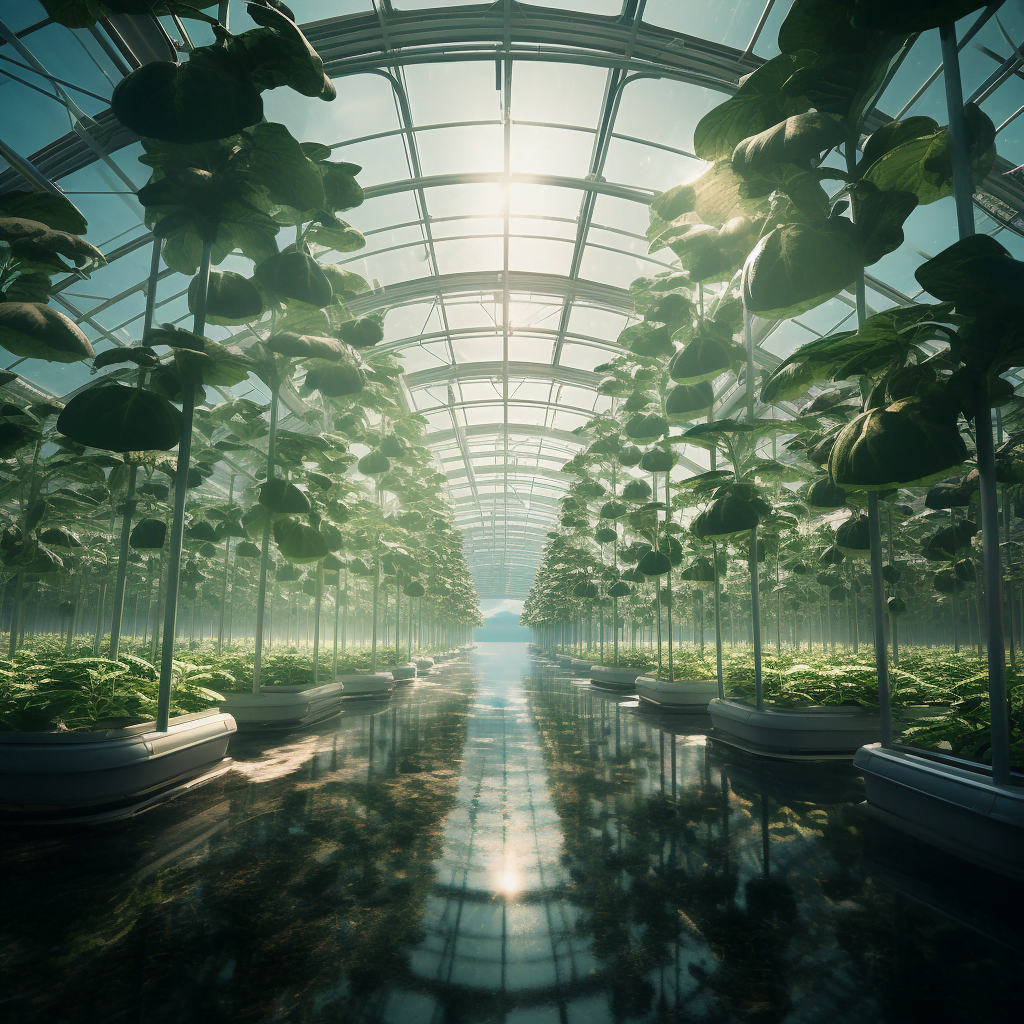
Conclusion
While sunlight powers photosynthesis and plant growth outdoors, the customized lighting flexibility of indoor hydroponic gardening means natural sunlight is not required.
With the proper grow lights providing calibrated spectrums, intensities and photoperiods tailored specifically to each plant variety, hydroponic systems can thrive fully on electricity-powered indoor lighting alone.
The ability to optimize lighting along with other environmental inputs like temperature, humidity and CO2 is one of the greatest benefits of controlled environment agriculture over conventional farming. Both hobby and commercial hydroponic growers can leverage this advantage to maximize yields, plant quality, and production efficiency independent of outdoor seasons and sunlight.
As LED lighting technology continues advancing, the possibilities for fully autonomous indoor agriculture are rapidly expanding. The future of sustainable food production will depend more and more on precision controlled hydroponic environments lit solely by increasingly optimized arrays of electricity-powered grow lamps.
